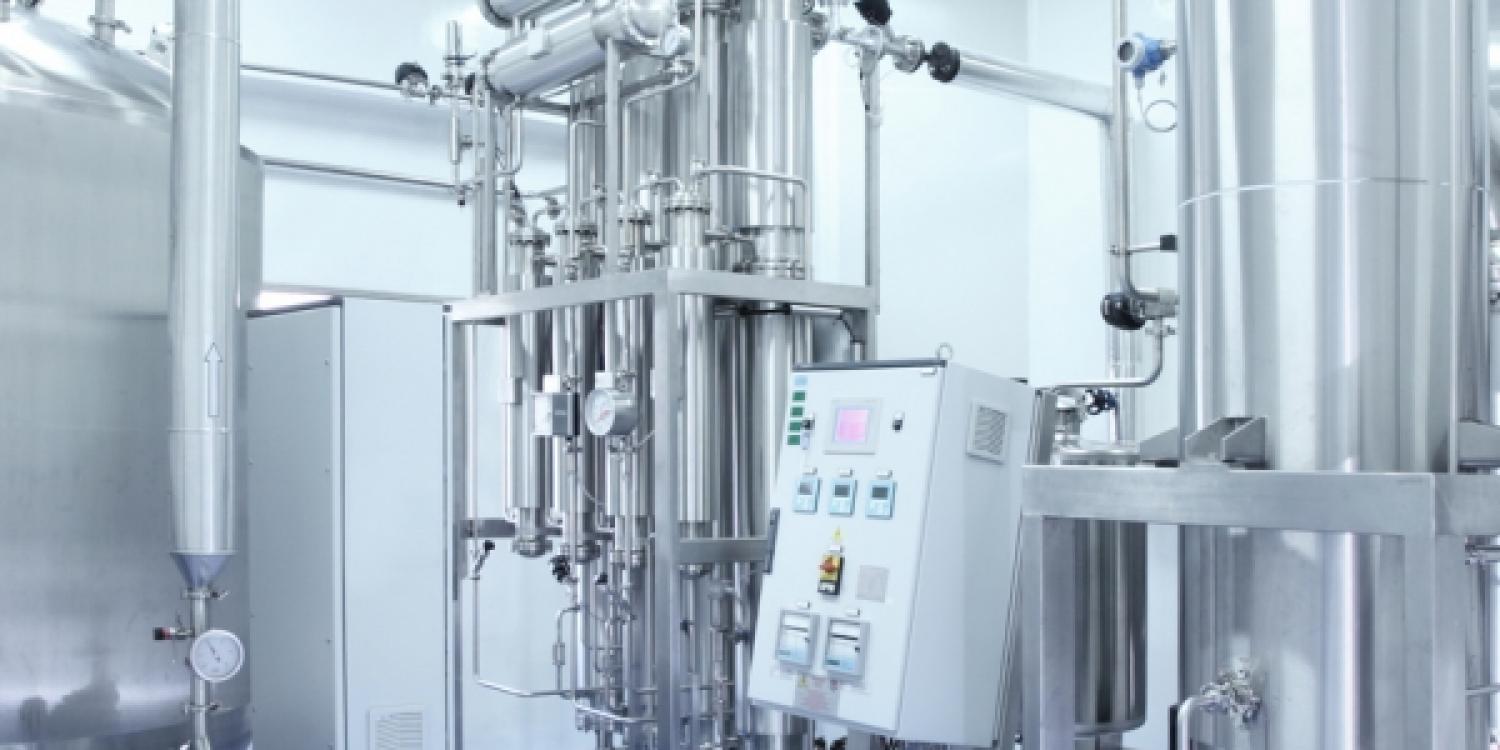Optimisation of cleaning-in-place systems

Information
Since the 1950s, clean-in-place (CIP) systems have been reliably used to clean inside surfaces of tanks and pipelines in liquid process equipment to avoid costly downtime associated with lengthy dismantling and cleaning tasks. The technique covers a variety of areas, but its main purpose is to remove solids and bacteria from vessels and pipework. Industries that rely heavily on CIP are those requiring high levels of hygiene, such as food, beverage and pharmaceutical companies.
CIP can therefore be carried out manually or with automated systems between process runs without having to dismantle or enter the equipment. A suitable chemical solution is circulated through the tanks or lines, then ideally returned to a central reservoir for possible reuse. Time, temperature and mechanical force are manipulated for the best cleaning results.
Many existing and older CIP systems can be time intensive and waste large amounts of energy, water and chemicals. Innovations now allow plant operators to optimise the process and still meet regulatory safety standards. New 'greener' CIP technologies can improve production by at least 20 % while enhancing the ability to track consumption activity throughout the various steps of the cleaning cycle.
As a result, sites should review and optimise their CIP systems every few years, to reduce the volume of cleaning agents (cold water, hot water, and chemicals) required for each session.
Improvement options include:
- Reusing the final rinse water as the first flush in subsequent CIP cycles
- Reducing CIP flow rates, chemical concentrations or temperatures, which may be possible without affecting cleaning performance
- Optimising the CIP programme for the size of plant/vessel and type of soiling, with respect to chemical dosing, water consumption, temperature, pressure and cleaning and rinsing times
- Automatic dosing of chemicals at the correct concentrations
- Manually removing product residues to ease the load of wet CIP cleaning
- Removing dry products/materials before the start of the wet cleaning cycle, e.g. gravity draining, pigging or using compressed air
- Installing efficient spray devices, where appropriate, to deliver water/chemicals in a more effective manner
- Using a turbidity detector to optimise both the recovery of material/product from water and the reuse of cleaning water during pre-rinsing
- Bleeding CIP chemicals into the effluent stream to manage pH levels in line with discharge consents
- Optimising temperatures through a solar heating system or other industrial waste heat
- Reusing chemical solution by returning it to a central cleaning reservoir
- Reducing labour costs and increasing safety through process automation
The aim of the final rinse is to remove the last traces of cleaning solutions from the cleaned equipment. Clean water is used and the rinsing water, which returns to the central CIP unit, is clean enough to be reused, instead of being discharged into the drain. The recovery of the final rinsing water requires a connection from the CIP return pipe to the pre-rinsing tank. A conductivity transmitter is used to divert the water, e.g. to the pre-rinsing tank.
For some applications, such as smaller or rarely used installations or where the cleaning solution becomes highly polluted, including UHT (ultra high temperature processing) installations, membrane separation plants, and the preliminary cleaning of evaporators and spray driers, single-use systems are used. In these systems, cleaning agents are not re-used, because they may impede the cleaning effect in other installations.
- Example of cost savings:
On one site, it was reported that one CIP system consumed about 600 m3 of water on a daily basis. It is assumed that, per cycle, this system uses 50 % hot water (at 60°C) and 50 % cold water and that optimisation of the CIP would reduce water consumption by 5 %. Therefore, based on these assumptions, the site could potentially save around 11 000 m3 annually. As this water saving would be a mix of both cold and hot water (estimated unit costs of € 0.02/m3 and € 2.85/m3 respectively for borehole water, and € 2.54/m3 and € 5.37/m3 for mains water), the site could save between € 15 730 and € 43 542 per year depending on the water source used, and 456 170 kWh per annum in energy savings. It is estimated, based on the requirement for two engineers for one week and associated lab costs, that CIP optimisation may cost around € 11 358. It should be noted that CIP systems may also include chemical addition which could, if the CIP is optimised, further increase potential savings.